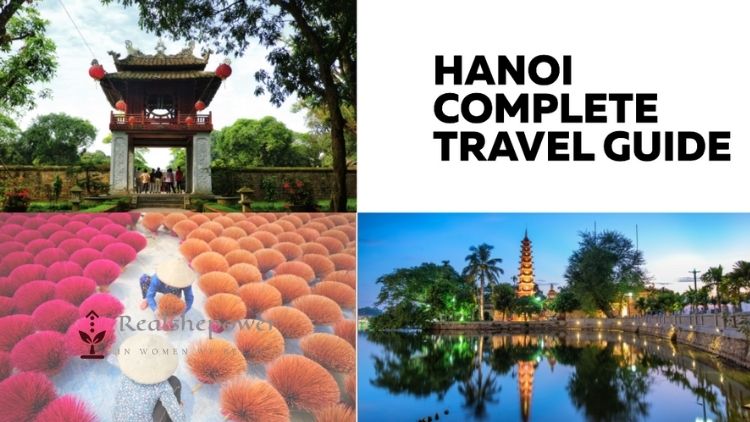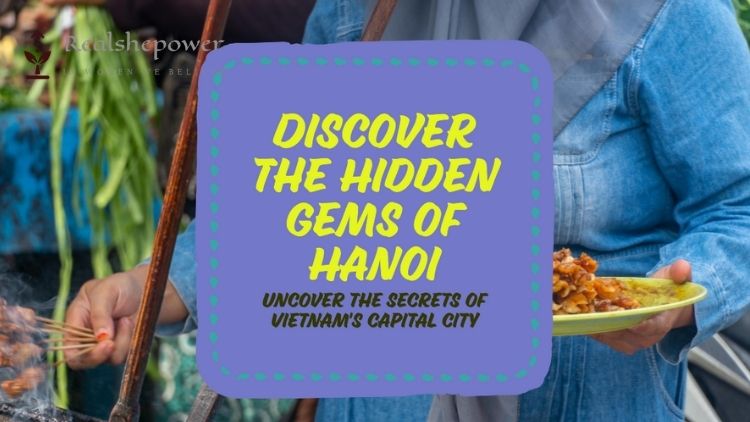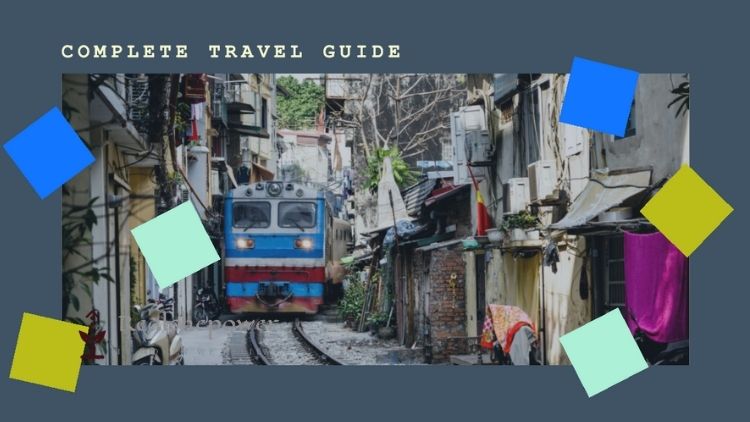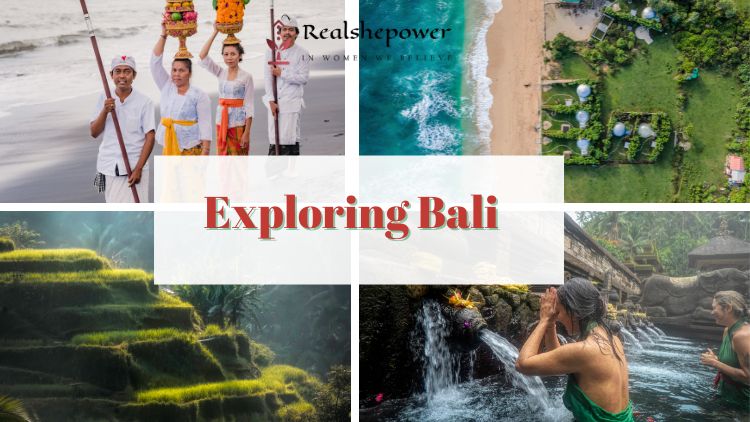Discover Hanoi: Your Ultimate Travel Guide to Vietnam’s Captivating Capital


Hanoi, with its seamless blend of historical allure and modern vibrancy, invites travelers to an immersive experience that transcends the ordinary. Each street is a narrative, each landmark a silent testimony to a rich, multifaceted cultural tapestry. Imagine embarking on a journey where every turn reveals an unfolding chapter of mysteries, elegantly narrating the harmonious dance between the ancient and contemporary worlds. As the gateway to Vietnam’s soul, Hanoi is more than a city; it’s an enigmatic storyteller, a symphony of experiences waiting to be unveiled, and a pulsating heart that beats with unyielding grace and timeless allure.
Table of Contents
Exploring the Cityscape:
1. The Old Quarter
A walk through the Old Quarter is akin to flipping through the pages of a living history book. This ancient neighborhood, marked by narrow streets and colonial buildings, narrates tales of Hanoi’s rich historical and cultural tapestry. Each street has a unique story, be it the traditional trades of Silk Street or the aromatic allure of Herb Street. With incense-infused temples nestled amidst vibrant markets and street food vendors, the Old Quarter is where the pulse of old Hanoi beats strongest.
2. Hoan Kiem Lake
Hoan Kiem Lake stands as an oasis of calm amidst the city’s lively rhythm. By day, it is adorned with the graceful movements of Tai Chi practitioners and the quiet rustle of trees; by night, the area transforms into a romantic escape, with the Ngoc Son Temple illuminated in ethereal grace. Legends of emperors and mystical turtles are whispered by the gentle waves, beckoning visitors to a world where mythology and nature embrace.
3. The Culinary Landscape
Hanoi’s culinary scene is a journey for the senses. It invites you to tables graced with the legendary Pho, steaming bowls of rice noodles immersed in aromatic broths, enriched with herbs and spices that tell of Vietnam’s agricultural bounty. The bustling street corners invite gourmets to savor Banh Mi, a testament to French colonial influence and Vietnamese ingenuity, where crispy baguettes meet flavorful local fillings.
4. The Architectural Marvels
Beyond the well-trodden paths lies Hanoi’s architectural elegance. The St. Joseph’s Cathedral stands as a testimony to gothic splendor, while the Hanoi Opera House echoes the artistic grandeur of bygone eras. The Imperial Citadel of Thang Long, a UNESCO World Heritage site, invites visitors to corridors whispering of royal dynasties, military prowess, and historical intrigue.
5. The Contemporary Hanoi
While the city is deeply rooted in its historical and cultural lineage, contemporary Hanoi is a spectacle of modern art galleries, chic cafes, and towering skyscrapers. The Lotte Center stands as a testament to Hanoi’s rapid urban development, offering panoramic vistas of the city’s evolving skyline. Here, the traditional and modern converge, showcasing Hanoi’s ability to embrace the future while honoring its past.
Facts about Hanoi:

1. History and Culture: Hanoi, with a history dating back over a thousand years, is one of the most ancient capitals in the world. Rich in culture and heritage, the city is home to an eclectic mix of eastern and western architecture, a testament to its historical significance and international influences.
2. Language: Vietnamese is the official language, a tonal language with a unique character, offering a glimpse into the nation’s identity and cultural richness. English is increasingly popular, especially in areas frequented by tourists, easing communication for international visitors.
3. Currency: The Vietnamese Dong (VND) is the official currency. ATMs are widely available, and major credit cards are accepted in hotels and upscale establishments. It’s advisable for tourists to carry some cash for street vendors and local markets.
4. Climate: Hanoi experiences a tropical monsoon climate, characterized by a wet and dry season. Summers can be hot and humid, while winters are relatively cooler and dry. The transitional periods between the seasons often offer the most pleasant weather conditions.
5. Best Time to Visit: The optimal time to explore Hanoi is from October to April when the weather is cooler and rainfall is minimal, offering comfortable conditions for sightseeing and exploration.
6. Transportation Hub: Hanoi serves as a major transportation hub in Vietnam. Noi Bai International Airport is well-connected globally. The city’s road and rail networks are extensive, offering easy access to various destinations across the country.
7. Cultural Festivals: Hanoi is renowned for its vibrant cultural festivals, such as the Tet Festival (Vietnamese New Year) and Mid-Autumn Festival. These events provide insights into the rich traditions, rituals, and community spirit of the Vietnamese people.
8. UNESCO World Heritage Sites: The city is in close proximity to several UNESCO World Heritage Sites, including Ha Long Bay, Trang An Landscape Complex, and the Imperial Citadel of Thang Long, making it a strategic starting point for cultural and natural explorations.
9. Cuisine: Hanoi’s culinary scene is world-renowned. It’s especially famous for ‘Pho,’ a noodle soup that has become synonymous with Vietnamese cuisine globally. Street food culture is prominent, offering a plethora of options for gastronomic adventures.
10. Arts and Crafts: The city is a haven for art lovers and those interested in traditional crafts. From intricate embroidery and lacquerware to the sophisticated performance art of water puppetry, Hanoi is a showcase of Vietnam’s artistic heritage.
Frequently Asked Questions:
1. What is the best way to get around Hanoi? Hanoi is best explored on foot, especially areas like the Old Quarter. Motorbike rentals, taxis, and ride-hailing services like Grab are readily available.
2. Is Hanoi safe for tourists? Hanoi is generally safe for travelers, with low crime rates. It’s advisable to take standard precautions to safeguard valuables.
3. What are some must-try dishes? Pho (noodle soup), Banh Mi (Vietnamese sandwich), and Bun Cha (grilled pork with noodles) are quintessential Hanoian delights.
4. Do I need a visa to visit Hanoi? Visa requirements vary depending on nationality. It’s advisable to check the latest visa regulations before planning your journey.
Complete Travel Guide:

Navigating through Hanoi, with its eclectic blend of the ancient and contemporary, requires more than just a map. It demands a comprehensive guide that can lead travelers through the city’s historic alleyways, bustling markets, serene landscapes, and modern urban sprawl, ensuring that every gem, hidden or glaring, is discovered and treasured.
Accommodation:
In Hanoi, finding a place to stay that caters to your comfort, convenience, and aesthetic pleasures is as integral to the experience as the city’s own attractions. Whether you’re leaning towards the opulent luxury of five-star hotels like the Sofitel Legend Metropole, with its colonial charm and modern elegance, or the cozy embrace of budget hostels located in the heart of the Old Quarter, Hanoi offers a haven for every traveler.
Luxury Hotels:
- Sofitel Legend Metropole: A blend of colonial grace and modern opulence.
- JW Marriott Hotel Hanoi: A contemporary space with a touch of luxury.
Budget Hostels:
- Old Quarter View Hanoi Hostel: Offers the authenticity of Hanoi’s traditional ambiance.
- Vietnam Backpacker Hostels: Known for its vibrant atmosphere and sociable environment.
Shopping:
Hanoi’s markets and shopping districts are more than just places to spend money. They’re cultural hubs, offering insights into the local life, traditional crafts, and the city’s modern consumer landscape.
Dong Xuan Market: Venture into the oldest market in Hanoi, where a myriad of stalls display a vast array of products from clothing to souvenirs.
Hang Gai Street: Known as Silk Street, this shopping haven offers an assortment of quality textiles, handicrafts, and accessories, allowing visitors to take a piece of Hanoi’s artistic legacy home.
Cultural Experiences:
Hanoi’s cultural pulse can be felt through its art galleries, theatres, and museums. Every art piece, performance, and artifact tells a story, adding layers to the city’s multifaceted identity.
Thang Long Water Puppet Theatre: Witness the magic of traditional puppetry narrating folklore with elegance, a dance of figures on the water that captures the heart.
Vietnam Women’s Museum: A profound narrative of the Vietnamese women’s contribution to the country’s cultural and historical legacy, presenting an insightful journey through time.
Natural Escapes:
The city’s architectural and cultural charm is complemented by its natural allure. Beyond Hanoi’s bustling environment, a world of scenic wonders await.
Ha Long Bay: Take a cruise amidst towering limestone pillars and islands topped with rainforests. The ethereal beauty of these waters narrate a tale of timeless natural artistry.
Ba Vi National Park: Escape the city’s hustle to embrace the tranquility of forests, rich biodiversity, and the mystical allure of mountainous landscapes.
Food and Cuisine:
Your Hanoi expedition isn’t complete without indulging in the city’s culinary landscape. A world where traditional recipes meet innovative culinary artistry, each dish is a flavorful journey.
Pho 10 Ly Quoc Su: Renowned for serving the best Pho, it’s a sanctuary for food lovers.
Bun Cha Ta: A haven where grilled pork and noodle come together, offering a taste of Hanoi’s authentic culinary delights.
Nightlife:
When the sun sets, Hanoi transforms into a vibrant display of lights, sounds, and energy. The nightlife here is as eclectic as the cityscape.
Ta Hien Street: Known as Beer Street, it’s a lively hub filled with bars and pubs where locals and tourists converge for a night of revelry.
The Summit Lounge: Offering panoramic views of the city, it’s an elegant space to unwind and relish the city’s nocturnal charm.
Conclusion:
Every journey to Hanoi is not just a physical voyage but a soulful expedition into a city that’s as dynamic as it is historic, as modern as it is traditional. Armed with this comprehensive guide, step into Hanoi with the anticipation of a traveler ready to unravel a city, and the reverence of a seeker about to embark upon a spiritual sojourn. Each alley, monument, lake, and street food stall is a chapter of Hanoi’s unwritten anthology, waiting to be discovered, read, and cherished.
Exploring Bali: Sun, Surf, and Serenity!

You can now write for RSP Magazine and be a part of the community. Share your stories and opinions with us here.
